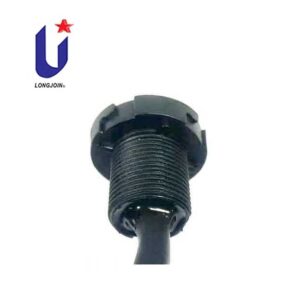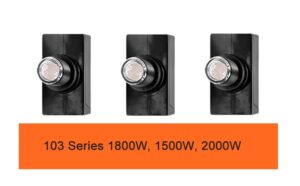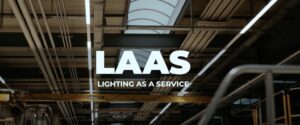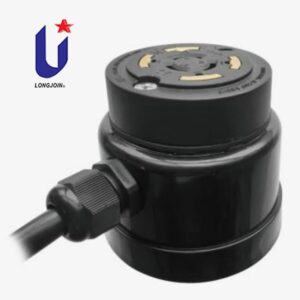AI-Optimized Control in Photocells: Achieving Self-Learning and Strategy Adjustment for Smart Lighting
Introduction
Artificial intelligence (AI) is transforming various industries. One area where AI is making a significant impact is in lighting systems, particularly in photocells. Photocells are devices that detect light levels and adjust lighting accordingly. With the integration of AI, photocells are now capable of more than just detecting light—they can optimize energy use, improve performance, and adapt to various conditions. AI-optimized photocell control is helping cities and businesses implement smarter, more efficient lighting systems.
AI Optimization Control
Artificial intelligence is a game-changer for photocell technology. Traditionally, photocells work by turning lights on and off based on light levels. However, with AI, photocells can go beyond simple on-off functions. AI-enhanced photocells can now adjust lighting levels dynamically. This is done based on the surrounding environment and real-time data.
AI helps photocells analyze multiple data points. It uses environmental factors like weather, time of day, and seasonal changes. Based on this data, AI determines the best lighting strategy. AI can also factor in energy consumption trends to ensure that the system uses energy efficiently.
This level of automation and intelligence makes photocells smarter. By integrating AI, photocells can work more efficiently, providing precise control over lighting systems. AI helps improve lighting quality while ensuring that energy is used in the most efficient way.


Self-Learning Ability
One of the most innovative aspects of AI in photocells is their self-learning ability. Traditional photocells simply react to the present light level. In contrast, AI-powered photocells learn from past data. They can study historical patterns of lighting usage, weather conditions, and energy consumption.
Through this learning process, photocells become more efficient over time. For example, they can predict when a streetlight will need more brightness due to incoming weather patterns. They can also adjust to seasonal changes. AI learns from data on how daylight hours change throughout the year. This allows photocells to adapt their operation for each season.
The self-learning ability means that the system becomes increasingly optimized. It improves its decision-making based on the ongoing data it gathers. Over time, photocells can predict lighting needs with a high level of accuracy, ensuring more reliable and efficient lighting systems.
Lighting Strategy Adjustments
Lighting needs change based on weather, time of day, and the season. AI-optimized photocells adjust lighting automatically. For example, when it rains, photocells can increase brightness. This ensures areas are well-lit even with low natural light. On bright days, the system reduces lighting to save energy. In winter, as daylight hours shorten, photocells adjust accordingly. This automatic adjustment ensures lighting is always optimal. AI can instantly adapt to any condition. It ensures energy is used efficiently without compromising lighting needs.
Optimal Energy Efficiency
AI-optimized photocells improve energy efficiency. Traditional systems might waste energy by leaving lights on too long. AI systems minimize waste. They adjust lighting based on time, weather, and the season. AI-powered photocells ensure lights are only on when needed. They also adjust the brightness to match environmental conditions. This reduces energy consumption. AI-controlled photocells also reduce maintenance costs. By optimizing lighting levels, they extend the lifespan of lights. This means fewer replacements and lower maintenance costs.
Real-World Application Cases
Case Study 1: Smart City Lighting in Singapore
Singapore uses AI-powered lighting systems in streets and public spaces. The lighting adjusts based on factors like time of day and weather. This helps save energy while ensuring optimal lighting. The city has reduced energy consumption by 20%. The quality of the lighting has also improved.
Case Study 2: AI-Driven Streetlights in Los Angeles
Los Angeles has adopted AI-controlled photocells for streetlights. The system adjusts lighting levels based on traffic flow. It also adapts to weather conditions. At night, lights dim when fewer cars and pedestrians are around. This saves energy without sacrificing safety. The city reduced electricity consumption by 15%. The streetlights also last longer.
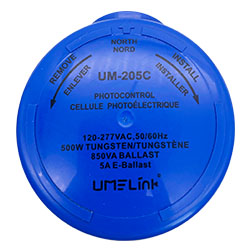
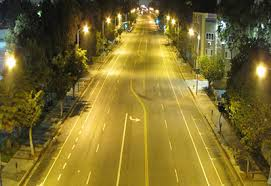
Case Study 3: Rural Area Lighting Solutions
AI-powered photocells are being used in rural areas. These areas often lack access to power grids. Solar-powered streetlights with AI control are an ideal solution. The lights store energy during the day and adjust brightness at night. AI ensures that energy use is optimized. It helps provide reliable lighting while conserving energy. This is especially beneficial in remote areas, where good lighting is crucial.
Wrap Up!
AI-optimized control in photocells is transforming the way outdoor lighting systems operate. The self-learning abilities of these systems are useful. When combined with their ability to adjust lighting strategies based on real-time data they offer many benefits. It creates more efficient, reliable, and sustainable lighting solutions. With AI technology, photocells can optimize energy use. This increases the lifespan of lights. They also make sure that outdoor environments are always properly illuminated.
Cities will continue to grow and become more interconnected. AI-powered photocells will play a critical role in the development of smart cities. The future of smart lighting looks bright. AI is also at the heart of this transformation.
FAQs
How does AI improve the performance of photocells?
AI optimizes photocells by analyzing real-time data, such as weather, time of day, and energy usage. It helps photocells adjust lighting levels dynamically. This ensures efficient energy use and improved lighting quality. AI-powered systems also learn from historical data. This helps to predict lighting needs and adapt to changing conditions.
Can AI-powered photocells adjust lighting based on weather changes?
Yes, AI-controlled photocells can automatically adjust lighting depending on weather conditions. For example, they increase brightness during cloudy or rainy weather. They can also reduce lighting on bright days. This helps to save energy while providing proper illumination.
What are the benefits of using AI in photocell lighting systems?
AI-powered photocells offer many benefits. These including increases energy efficiency and reduced maintenance costs. They also improve lighting quality. They optimize energy use by adjusting brightness based on environmental factors. Energy waste is also reduced by ensuring lights are only on when needed. AI also extends the lifespan of lights by optimizing their performance.
External Link:
https://www.britannica.com/technology/artificial-intelligence/Reasoning

